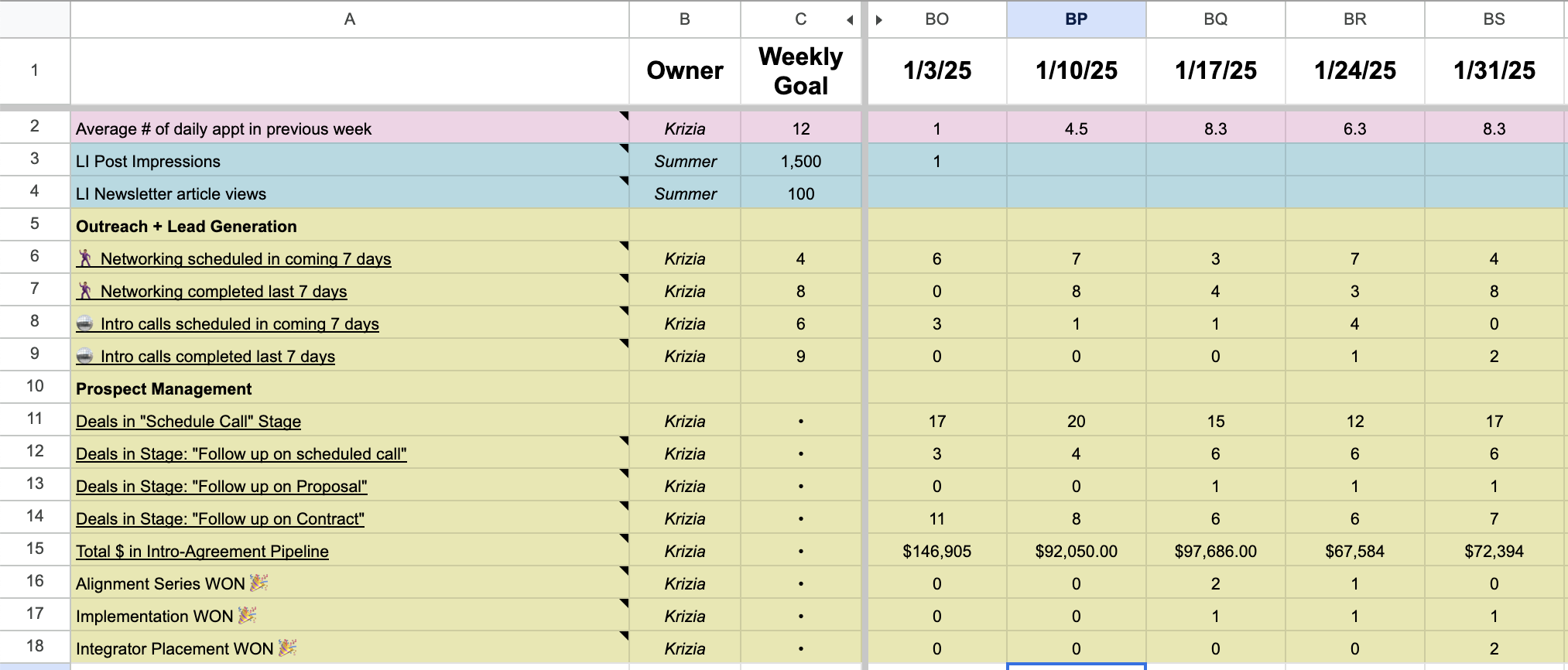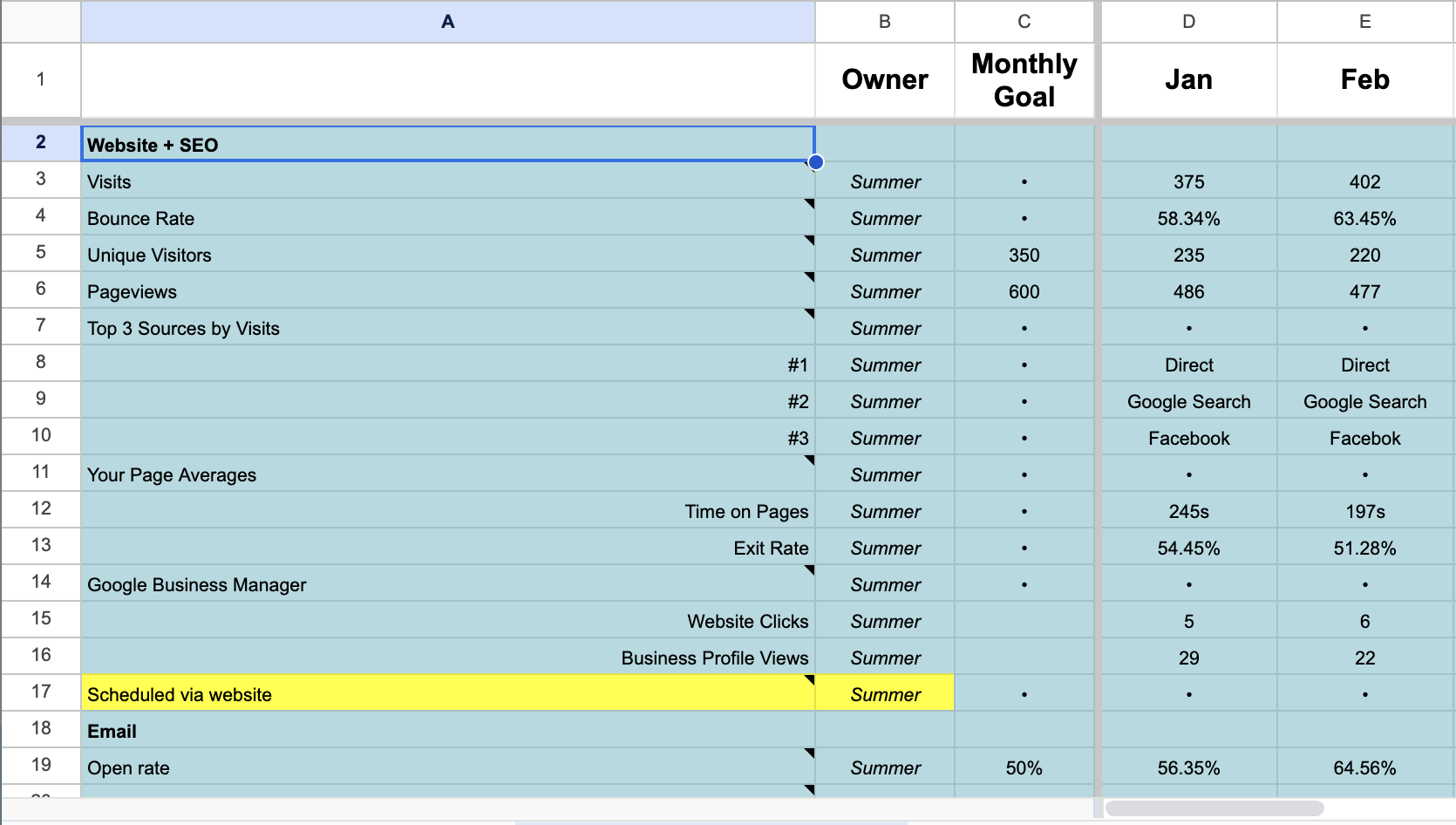Harnessing Key Performance Indicators (KPIs) for Visual Growth
There’s a fine line between consistency and insanity. One builds momentum. The other keeps you stuck in a cycle of effort without results. The difference? Tracking what’s working and what’s not.
If you’re building a speaking business, you’re likely wearing multiple hats—marketing, sales, client fulfillment, finances, and more. The challenge is that without measurable data, it’s difficult to know where to focus or how to improve. That’s where Key Performance Indicators (KPIs) come in. They help you track the return on your time, money, and energy so you can stay aligned with your big-picture goals.
Why Speakers Need KPIs
Many speakers start their business without a structured way to measure success. They rely on gut feelings—believing that if they’re getting inquiries and speaking engagements, they must be on the right track. But this approach has a major flaw:
It’s reactive, not proactive. You only assess what’s working when things feel slow
It lacks clarity. Without concrete data, it’s hard to make informed decisions
It doesn’t scale. A speaking business built on guesswork can’t be optimized for growth
KPIs give you tangible markers to help you:
Identify what’s driving results (and what’s wasting time)
Stay on track with revenue and business growth goals
Make data-driven decisions instead of relying on assumptions
Create repeatable, scalable processes that build long-term success
For speaking businesses just starting their journey with metrics, KPIs don’t need to be complicated. You need a clear snapshot of the most important areas of your business:
Marketing & Lead Generation: Are you consistently bringing in new opportunities?
Sales & Conversions: Are inquiries turning into paid bookings?
Revenue & Profitability: Are you on track to meet your financial goals?
Fulfillment & Client Success: Are you delivering high-quality experiences that lead to referrals and repeat business?
Additionally, tracking your speaking engagements can help set you up for earning your Certified Speaking Professional (CSP) designation through the National Speakers Association– a prestigious credential that demonstrates a track record of speaking excellence and business success. By consistently tracking your engagements, you’ll have the documentation needed when it’s time to apply.
What to Track Without Getting Overwhelmed
Feeling unsure about where to start? You’re not alone. Tracking data can feel like a lot, but the good news is—you don’t have to do it all at once. The best approach is to begin with what’s already available in your current tools. Start small, focusing on what’s easiest to access, and build from there. If something feels overwhelming, give yourself permission to track less. The goal is progress, not perfection.
Marketing & Sales
Consider keeping an eye on how many speaking inquiries you receive each month and where they’re coming from—LinkedIn, email, networking, or referrals. If you already track this, you might also look at how often those inquiries turn into booked gigs. Other helpful insights could be website traffic, email engagement, or whether social media activity is leading to direct inquiries. But if that feels like too much, just start with one or two data points that feel manageable.
Revenue & Profitability
A simple starting place is tracking your total speaking fees. From there, you can refine by noting your average fee per gig and how long it typically takes to move from inquiry to contract. Some speakers also compare revenue against expenses or track different revenue streams like consulting or digital products—but again, only add what feels helpful to you.
Speaking Engagements & Growth
Keeping a record of your speaking engagements doesn’t have to be complicated. If you’re up for it, note details like event length, fees, location, and audience size. This can help you see patterns and position yourself for larger opportunities, including CSP qualification. But if that feels like a lot, just tracking your paid engagements and repeat bookings is a great place to start.
Fulfillment & Client Success
Beyond landing gigs, measuring your impact can provide valuable insights. How often do clients rebook? Are you receiving testimonials and referrals? If collecting post-event feedback feels like an easy win, great! If not, even a simple habit—like jotting down positive feedback from clients—can be a meaningful start.
Start Where You Are
There’s no one-size-fits-all approach to tracking. The most important thing is to choose what feels doable for you right now. Over time, you can refine and add more as it makes sense. No pressure—just progress.
Understanding KPIs: The Input + Output Equation
Every KPI is made up of two parts:
Input (The Action You Take) → Output (The Result You Measure)
Think of it like an equation: Consistent Action (Input) = Measurable Progress (Output)
Example 1: Marketing KPI
Goal: Increase website traffic
Input: Publish one LinkedIn post per week linking back to the website
Output: Growth in website visitors
Example 2: Sales KPI
Goal: Book three paid speaking engagements per month
Input: Send 10 pitches to event organizers
Output: Number of booked gigs
By tracking both sides—your actions and the results—you gain insight into what’s working, what’s not, and where to adjust. If the output isn’t what you expected, tweaking the input (e.g., sending 15 pitches instead of 10) can help optimize results.
Establishing a KPI Review Cadence
Tracking KPIs is not a one-time exercise. To make data-driven decisions, you need a structured approach for reviewing and analyzing your metrics.
What’s a realistic review schedule for you and your business today?
Weekly Check-ins: A quick pulse on key metrics. Are you trending in the right direction?
Monthly Reviews: A deeper analysis of trends, wins, and areas needing improvement.
Quarterly Adjustments: A full assessment of your business trajectory, with adjustments based on performance.
If you have support staffers (yep, even 1099s!), determine who is responsible for tracking each metric.
Does your assistant update revenue numbers?
Does your marketing coordinator track lead sources?
Does your bookkeeper manage financial KPIs?
Assigning ownership ensures KPIs remain a priority rather than an afterthought. More importantly, it helps your team see how their efforts contribute to the bigger picture. When everyone understands how their work connects to key business goals, they become more engaged, proactive, and invested in the long-term vision.
Visualizing Your KPIs
To make KPI tracking simple and actionable, it helps to use a dashboard that gives you a clear snapshot of your progress. Whether you’re tracking weekly trends or reviewing performance on a monthly basis, having an organized system keeps you focused on what matters most.
This can be as simple as keeping a running spreadsheet or taking a quick screenshot of key metrics, or as advanced as using a dedicated software like funnel.io to automate tracking and visualization. The key is to choose a system that fits your workflow and ensures your data remains useful, not overwhelming.
Here’s a quick snapshot from our KPI dashboard to spark inspiration…
Your dashboard should be easy to update, accessible to your support staff (if applicable), and reviewed regularly to ensure you're making data-driven decisions.
Common KPI Pitfalls to Avoid
1. Relying on Vanity Metrics
Many speakers get caught up in follower counts, likes, and impressions instead of actual business growth.
A social post going viral doesn’t mean it brought in paying clients
A large email list doesn’t matter if no one is opening or responding
More website traffic is useless if it’s not converting into leads
Instead, track metrics tied directly to revenue and business growth.
2. Tracking Too Many KPIs
Not everything needs to be measured. When starting out, keep it simple.
Choose 3-5 key metrics that impact revenue, client acquisition, and fulfillment.
Build from there once tracking becomes a habit
3. Not Defining Success Clearly
Many speakers track numbers without clear targets.
Instead of saying, “I want more LinkedIn engagement,” define a success metric:
“I want 3 inbound speaking inquiries per month from LinkedIn.”
Instead of saying, “I need to grow my email list,” set a conversion goal:
“I want 10% of my email subscribers to book a discovery call.”
Clear targets lead to better focus and smarter decision-making.
The 90-Day Rule
When you first start tracking KPIs, you’re establishing a baseline. Don’t expect immediate perfection.
Commit to a 90-day tracking period, then reassess:
What’s working? Double down
What’s not working? Adjust your strategy
What needs refinement? Streamline or simplify
Your business will evolve, and so should your KPIs. KPIs are not about adding complexity—they’re about gaining clarity. They help you make informed decisions, identify opportunities for growth, and ensure that your efforts are leading to meaningful results.
Start small. Track what’s accessible. Establish a routine for reviewing data. And most importantly, use your numbers to take intentional action. The success of your speaking business depends not just on effort, but on measuring what truly matters. Whether it’s tracking revenue, refining your marketing efforts, or improving conversion rates, your ability to measure and refine your business will be the key to long-term success.
Great outcomes start with better inputs. Book some time to chat and together we can rethink what you’re tracking, and why.








